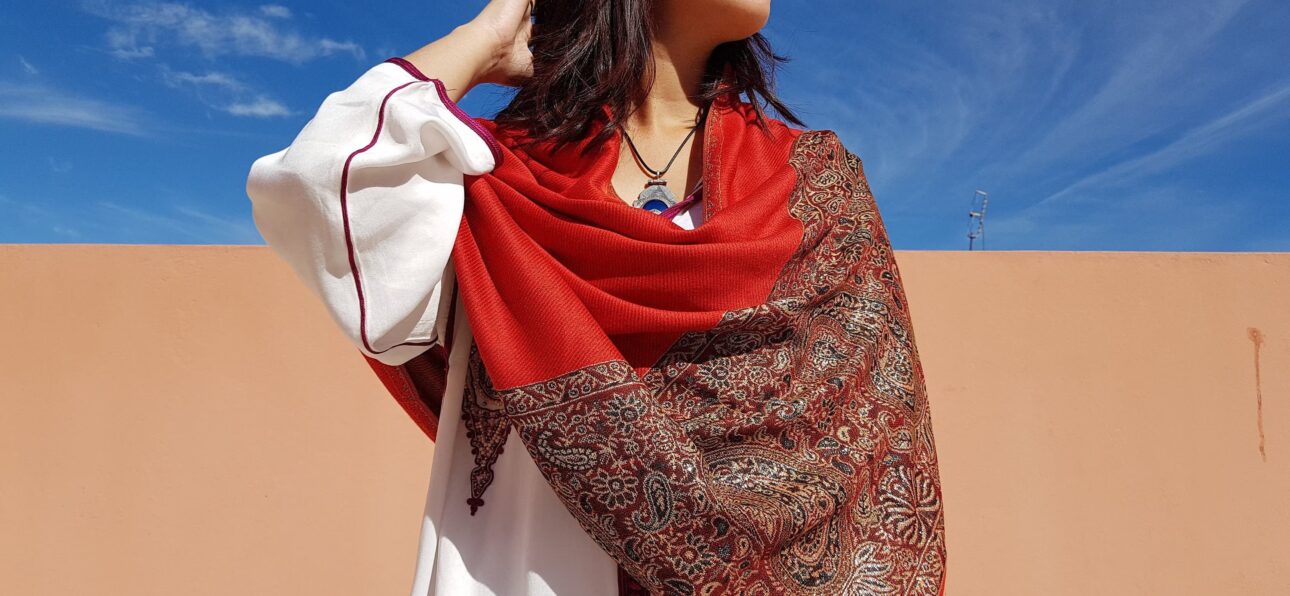Morocco, a land of vibrant colors, rich history, and breathtaking landscapes, is not only known for its mesmerizing beauty but also for its incredible artisan traditions. In this article, we’ll embark on a fascinating journey through the heart of Moroccan craftsmanship, delving into the world of Moroccan handmade goods. From intricate ceramics to luxurious textiles and mesmerizing jewelry, this is a tale of creativity, culture, and timeless artistry.
Table of Contents
| Sr# | Headings |
|---|---|
| 1 | Introduction |
| 2 | The Roots of Moroccan Artistry |
| 3 | Ceramics: The Heart of Moroccan Craftsmanship |
| 4 | Textiles: A Tapestry of Moroccan Creativity |
| 5 | Leatherwork: A Tradition of Excellence |
| 6 | Jewelry: A Gleaming Legacy |
| 7 | Carpets: A Woven History |
| 8 | Woodwork: Crafted Elegance |
| 9 | Metalwork: Shaping Moroccan Identity |
| 10 | Pottery: Art in Everyday Life |
| 11 | Conclusion: A Treasure Trove of Moroccan Artistry |
| 12 | FAQs: Unveiling the Mysteries of Moroccan Artisan Traditions |
1. Introduction
Morocco, with its mystic deserts, bustling markets, and ornate palaces, has a unique allure. Yet, what truly sets this country apart is its rich artisan tradition, creating some of the most exquisite handmade goods in the world. So, let’s embark on this journey of discovery and unravel the secrets of Moroccan craftsmanship.
2. The Roots of Moroccan Artistry
Moroccan artisan traditions have deep roots that reach back centuries. Influenced by a blend of Berber, Arab, and Andalusian cultures, these traditions are a testament to the cultural diversity of the region. They reflect the history, religion, and everyday life of the Moroccan people.
3. Ceramics: The Heart of Moroccan Craftsmanship
Moroccan ceramics are famous worldwide for their intricate designs and vibrant colors. Each piece is handmade, from the smallest tea cups to the grandest fountains. These ceramics tell stories, depicting elements of Moroccan daily life, from geometric patterns to intricate calligraphy.
4. Textiles: A Tapestry of Moroccan Creativity
Moroccan textiles are a true feast for the eyes. The famous Moroccan carpets, adorned with mesmerizing patterns, are masterpieces that take weeks to create. Handwoven textiles, including the delicate silk and wool creations, are not just fabrics; they’re the embodiment of Moroccan artistry.
5. Leatherwork: A Tradition of Excellence
Moroccan leather goods are sought after globally. From intricately designed bags to traditional babouche slippers, the craftsmanship is unmatched. Skilled artisans use age-old techniques to transform leather into beautiful, functional pieces.
6. Jewelry: A Gleaming Legacy
Moroccan jewelry is a symbol of elegance and cultural heritage. Silver, coral, and enamel are meticulously crafted into intricate designs. Each piece is a work of art that reflects the beauty and traditions of Morocco.
7. Carpets: A Woven History
Moroccan carpets are not just floor coverings; they are stories woven into threads. Berber carpets, in particular, are known for their unique geometric patterns and tribal symbolism. They are a source of pride for Moroccan families and a testament to their history.
8. Woodwork: Crafted Elegance
Moroccan woodwork is a delicate art form that decorates everything from doors to furniture. Skilled artisans carve intricate designs, making woodwork an essential part of Moroccan architecture and design.
9. Metalwork: Shaping Moroccan Identity
Moroccan metalwork showcases the craftsmanship of blacksmiths and metal artists. From exquisite lanterns to intricate tea trays, metalwork is an essential aspect of Moroccan culture, combining both functionality and artistry.
10. Pottery: Art in Everyday Life
Moroccan pottery is not just about plates and bowls; it’s about tradition and artistry. Hand-painted, often in the iconic blue and white, these pieces add a touch of Moroccan culture to every home.
11. Conclusion: A Treasure Trove of Moroccan Artistry
As we conclude our journey through Moroccan artisan traditions, it’s evident that these handmade goods are more than just objects. They are a reflection of the Moroccan way of life, culture, and creativity. By appreciating and supporting these traditions, we ensure their preservation for generations to come.
12. FAQs: Unveiling the Mysteries of Moroccan Artisan Traditions
Q1: What makes Moroccan handmade goods unique?
Moroccan handmade goods are unique due to their intricate designs, vibrant colors, and the centuries-old techniques employed by skilled artisans. These goods encapsulate the essence of Moroccan culture.
Q2: Where can I buy authentic Moroccan handmade goods?
Authentic Moroccan handmade goods can be found in traditional souks (markets), artisan cooperatives, and reputable online marketplaces. Ensure you’re buying from trusted sources to get genuine products.
Q3: What are some popular Moroccan handmade goods for collectors?
Collectors often seek Moroccan rugs, ceramics, jewelry, and leather goods. These items are not only stunning but also hold significant cultural and artistic value.
Q4: Are Moroccan handmade goods expensive?
The price of Moroccan handmade goods varies depending on the item’s complexity, size, and the artisan’s reputation. While some items can be affordable, others, especially those with intricate designs, may be more expensive.
Q5: How can I support Moroccan artisans and their traditions?
You can support Moroccan artisans by purchasing their handmade goods, visiting artisan cooperatives, and spreading awareness about their craftsmanship. Your support ensures the preservation of these cherished traditions.
In conclusion, exploring Moroccan artisan traditions and the world of Moroccan handmade goods is a captivating journey that unveils the heart and soul of this remarkable culture. These goods are not just items for everyday use; they are pieces of art, carrying with them the stories and traditions of Morocco. By understanding and valuing them, we can help keep this vibrant heritage alive for generations to come. So, the next time you come across a piece of Moroccan craftsmanship, remember that it’s not just an item; it’s a piece of history and a testament to human creativity.
